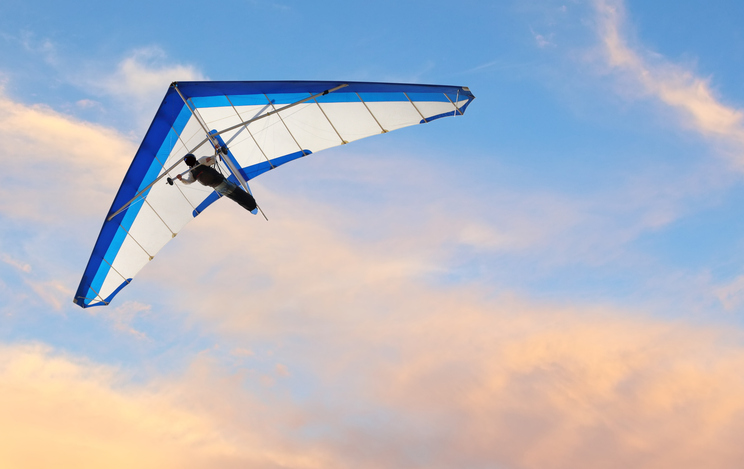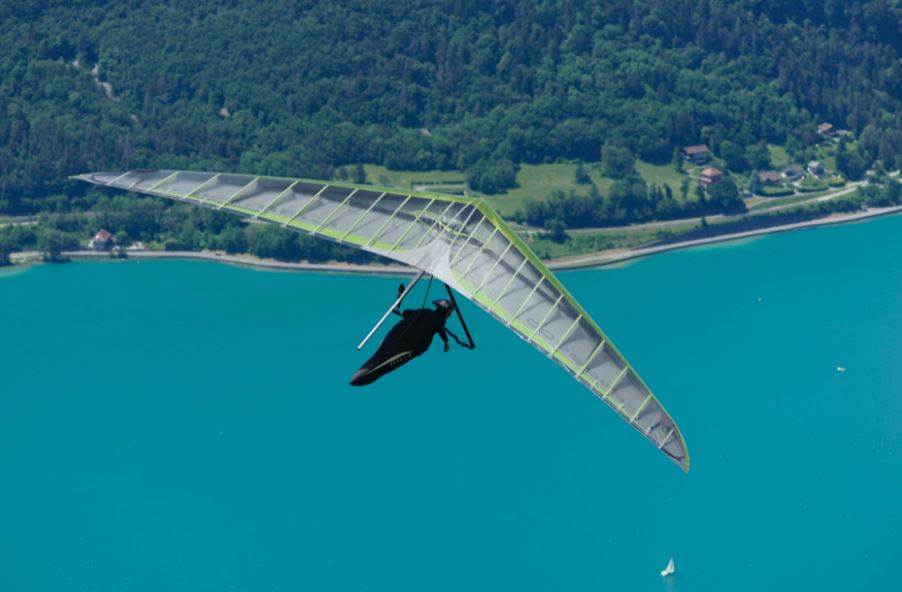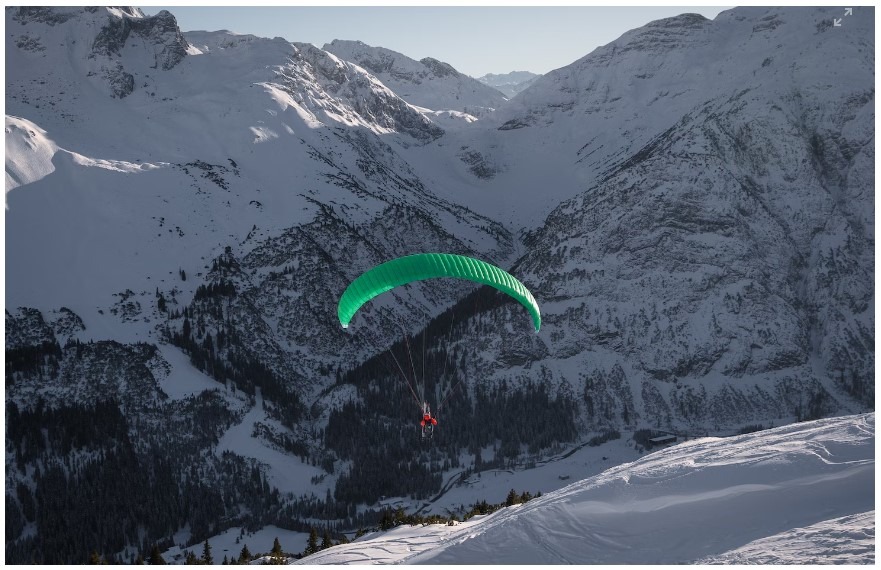Adrenaline in the Air: Texas’ Best Spots for Hang Gliding and Paragliding

Texas offers thrilling aerial adventures with premier launch areas in the Texas Hill Country near Fredericksburg and Llano. You'll find excellent training at Cowboy Up near Houston, Fly Texas in the Austin region, and Lone Star Paramotor in San Antonio. First-time flyers can enjoy tandem experiences starting at $179, with 15–30 minute flights under expert guidance. Activities align with USHPA standards for hang gliding and paragliding (and USPPA guidance for paramotoring), and local communities welcome newcomers with resources for your high-flying journey.
Top Launch Sites Across the Lone Star State
While Texas mightn't immediately come to mind for aerial adventures, the Lone Star State offers a mix of tow and foot-launch opportunities that’ll surprise even seasoned pilots. The Hill Country has select foot-launchable bluffs and nearby tow options, while large open fields across Central and North Texas support aerotow and winch operations favored by many pilots. You’ll find drive-up tow parks and shorter approach hikes at some hill sites, with benign air in the mornings and stronger mid-day thermals for experienced flyers. Local pilot recommendations often highlight Hill Country overlooks and areas around Marble Falls and Burnet with varied wind exposures. Bring appropriate footwear and hydration for any hike-in sites. Instead of one central “official” map like paddling has, site details are best gathered from the USHPA Site Guide and well-maintained tools pilots use. For current conditions and detailed information, check paraglidingmap.com, the USHPA Site Guide, or xcontest.org before planning your flight.Premier Flight Schools and Training Centers
Texas offers more than just beautiful places to fly—you’ll also find exceptional schools that can help you progress from curious observer to confident pilot. From Cowboy Up near Houston to Fly Texas around Austin, these programs focus on progressive curricula and rigorous equipment checks. Whether you’re seeking hang gliding, paragliding, or paramotoring instruction, Texas schools provide options ranging from introductory tandem flights to rating-track courses. With many flyable days near Houston and Central Texas, weather cooperates often—though instructors will always prioritize safety.
- Cowboy Up near Houston offers structured multi-lesson packages that lead toward USHPA ratings.
- Fly Texas brings decades of experience in the Austin area.
- Lone Star Paramotor adapts training to weather windows in San Antonio.
- Xperience Days lists affordable introductory tandem experiences starting at $179.
Most schools prepare students for USHPA ratings in hang gliding/paragliding (and USPPA for paramotor), with experienced instructors guiding your journey skyward.
What to Expect During Your First Tandem Experience
Taking the leap into a tandem hang gliding or paragliding experience can set your heart racing with anticipation. Before takeoff, you’ll receive a safety briefing while your instructor checks your harness and equipment, providing essential tips about launch procedures and landing techniques. The takeoff happens quickly—just a few steps or a smooth tow before you’re airborne. You’ll be securely strapped into a tandem-rated harness alongside your instructor, who controls every aspect of the flight. During flight, your pilot manages the glider while chatting about the panoramic Texas landscapes below. Many memorable moments occur during these peaceful 15–30 minutes aloft, and you might even get to briefly steer under supervision. For landing, simply follow your instructor’s cues to stand and walk upon touchdown. Prices typically range from $110–$330 depending on location and flight duration.
Safety Standards and Certification Requirements
Every aspect of hang gliding and paragliding in Texas emphasizes risk management to protect pilots and passengers alike. You don’t need a federal license to fly solo, but you must fly within FAR Part 103 and follow best practices from USHPA (and USPPA for paramotor). Weather awareness is critical—conditions can change rapidly, and sound judgment about when not to fly is part of flying well.
- Helmets are standard, and reserve parachutes are strongly recommended, especially for higher-altitude or thermic conditions.
- Pre-flight inspections of wings, lines, and harnesses are standard practice and required by most instructors and clubs.
- USHPA/USPPA training follows progressive ratings (H/P1–H/P4 or equivalent) based on demonstrated skills and knowledge; required hours vary by student.
- Local ordinances and land-manager rules may add restrictions or permit requirements.
These norms aren’t bureaucratic hurdles—they help keep the sport responsible and enjoyable. Note that using gliders in park areas often requires permission or permits from the managing authority.
Texas Hang Gliding and Paragliding Communities
Enthusiasts across the Lone Star State maintain vibrant communities that serve as social hubs and valuable knowledge sources. Groups such as the North Texas Hang/Paragliding Association (NTHPA) and local clubs around Houston, Austin, and San Antonio host meetups, coaching days, and safety briefings. You’ll find numerous training options throughout Texas, with organizations like Cowboy Up Hang Gliding and Fly Texas offering thorough instruction for beginners and advancing pilots alike. Many clubs maintain USHPA affiliation, helping align local practices with national standards. Social channels, newsletters, and online forums keep members updated on sites, trips, and safety. For deeper technical discussions and trip reports, many Texas pilots contribute on the Hanggliding.org forum. Whether you’re drawn to aerotowing or paramotoring, these communities welcome newcomers while supporting experienced pilots through shared resources and expertise.
Best Seasons and Weather Conditions for Flying in Texas
When planning your aerial adventures in Texas, timing often makes the difference between a breathtaking glide and a scrubbed session. Spring and fall generally offer reliable thermals with moderate temperatures. West Texas locations like Marfa can deliver consistent soaring days, while Hill Country terrain creates unique lift patterns in the right winds. Location-specific microclimates greatly influence your experience:
- Morning and evening flights provide smoother air, ideal for beginners.
- Midday summer thermals bring powerful lift but also increased turbulence risk.
- Dry soils can enhance thermal development, especially in drought periods.
- Coastal regions have higher humidity and sea-breeze patterns that narrow prime windows compared to inland sites.
Monitor detailed forecasts and on-site observations—especially during thunderstorm season—to maximize your chances of success.




